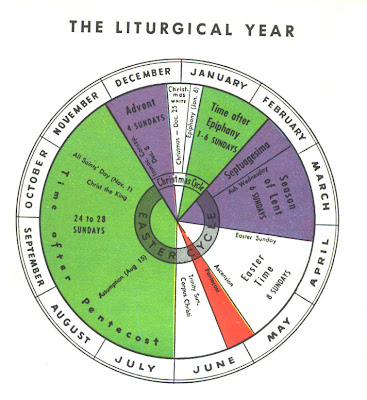Reference




OpenAI's Answer
The traditional colors used in the Catholic liturgical calendar hold significant meaning and are employed throughout various seasons and celebrations. Here are the primary liturgical colors:
-
White: Used during Christmas and Easter, and for celebrations of the Lord, the Virgin Mary, and non-martyred saints. It symbolizes purity and joy.
-
Red: Represents blood and fire. It is used on Palm Sunday, Good Friday, the feasts of martyrs, and the celebrations of the Holy Spirit, such as Pentecost.
-
Green: The color of Ordinary Time, symbolizing growth and hope. It is used in the liturgical calendar during the weeks that are not part of the major seasons.
-
Purple (Violet): Used during Advent and Lent, symbolizing penance and preparation.
-
Rose: Used on the third Sunday of Advent (Gaudete Sunday) and the fourth Sunday of Lent (Laetare Sunday) as a sign of joy amidst the penitential seasons.
-
Black: Traditionally used for funerals and All Souls' Day, symbolizing mourning.
-
Gold or Silver: Sometimes used in place of white or festal colors for special celebrations.
For more detailed information, you can refer to the U.S. Conference of Catholic Bishops' guide on liturgical colors here.
Here are some relevant images illustrating these colors:



These colors enrich the liturgical experience, helping the faithful to engage more deeply with the seasons of the Church year.
Follow Up
Related
How do the Lutheran liturgical calendar and the Catholic calendar compare?
How did the medieval Christian calendar influence the secular calendar in Europe?
What is the primary difference between the Julian and Revised Julian calendars?
Where does the month of Abib stand in the Ethiopian calendar?
What is the role of the liturgical calendar in Reformed worship?